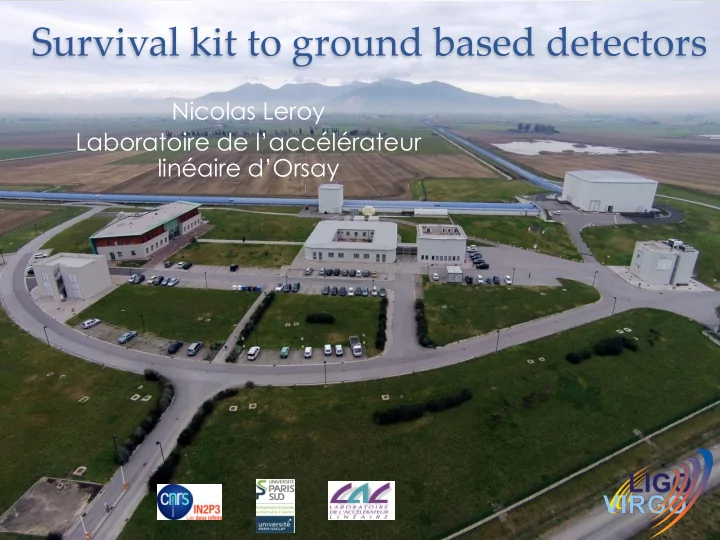

Survival kit to ground based detectors Nicolas Leroy Laboratoire de l’accélérateur linéaire d’Orsay
What are Gravitational waves ? 2
Suspended interferometer det = P in ( ) P 2 1 + C cos( Δ φ ) C = 2 r 1 r 2 2 + r 2 r 1 2 ≡ δφ GW � ≡ Δφ OP � ( ) ( ) h ( t ) Δ φ = 2 π l 2 − l 1 + 2 π l 2 + l 1 λ λ det = P in ( ) P 2 1 + C cos( Δ φ OP ) − C sin( Δ φ OP ) × δφ GW ( t ) 3
Limiting noises Pendulum Mirror thermal Violin mode, resonances� noise noise from the wire
Quantum noise @ P.-F. Cohadon
Quantum noise in GW detector
Increase sensitivity : optical path @ J. Degallaix
Increase sensitivity : � location, materials and quantum noise
Main challenges for a detector on Earth
Advanced generation detector @LMA Michelson interferometer High quality� Goal : (L x -L y )/L x = 10 -23 optics – 40 kg Surface RMS ~nm Feedback loops from few Hz to few kHz Fabry-Perot cavities High power laser Full system under� vacuum ~10 -12 atm Suspended @ARTEMIS Optics� 200 W ARenuation @APC Mode matching @LAPP 10 14 @ 10 Hz Spatial filtering 10
Targeted sensitivity Contribution of main sources of noise Different SR configurations
All-sky detector
Current status
Post O3 program: Advanced Virgo + LIGO India (same as LIGO at the same time) Advanced Virgo Early (2016–17, 20 – 65 Mpc) Mid (2018–19, 65 – 85 Mpc) Strain noise amplitude/Hz − 1 / 2 Late (2019–20, 65 – 115 Mpc) Design (2021, 125 Mpc) 10 − 21 BNS-optimized (140 Mpc) 10 − 22 Signal recycling 10 − 23 squeezing coating 10 − 24 10 1 10 2 10 3 Frequency/Hz LIGO Voyager ? KAGRA
Moving to next generation
Possible scenario
Conclusions
Recommend
More recommend